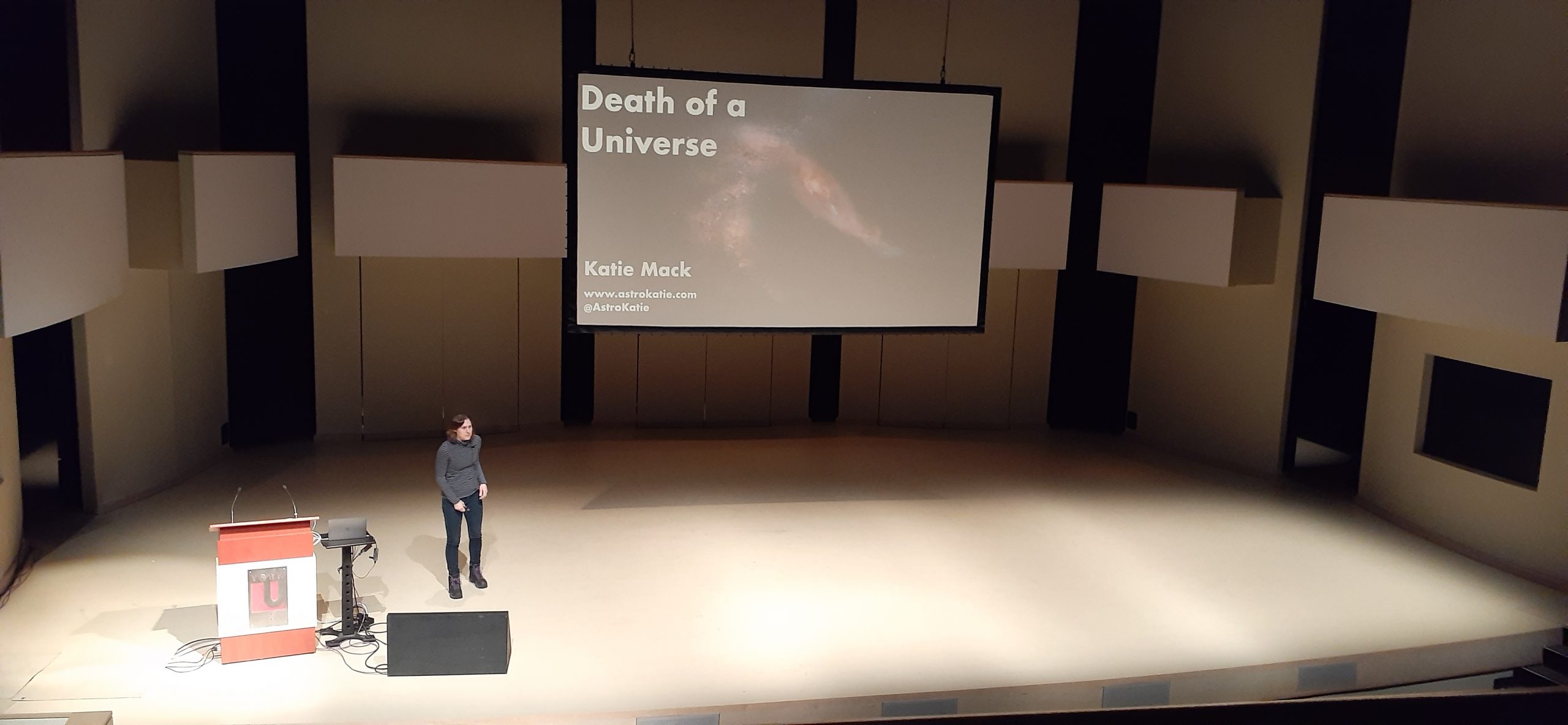Tyler McKay | Assistant News Editor
Featured Image: Dr. Katie Mack begins her talk in the Tribute Communities Recital Hall, located in Accolade East. | Courtesy of Tyler McKay/Excalibur
On Thursday, February 27, a talk was hosted by Future Women in Physics and the Department of Physics and Astronomy. Theoretical astrophysicist and science communicator, Dr. Katie Mack came to talk about the different ways the universe might end and what it would look like.
This topic piqued the interest of first-year physics and astronomy student Mohammed Hafa.
“It was really interesting that, from the title of the presentation, that we always talk about the beginning of the universe and now we are talking about the end.”
Mack received her PhD from Princeton University in 2009. Currently, she is an assistant professor at North Carolina State University.
“Mack has studied dark matter, the early universe, galaxy formation, black holes, and the ultimate fate of the universe,” said coordinator of the York Observatory, Paul Delaney.
Four main theories about the death of the universe were discussed: the big crunch, the heat death, the big rip, and vacuum decay.
When telescope imagery is examined over time, galaxies are seen moving apart at an accelerated pace.
“What if that expansion is temporary? What if, at some point, the expansion turns around and the galaxies start coming back together and the universe gets smaller and more crowded?” asked Mack.
Mack stated that we would see galaxy collisions with stars being pulled around and rearranged by the force of gravity before the entire universe collapsed back upon itself to the point of the Big Bang.
Next was heat death, which is the most likely according to Mack. As the universe expands into infinity, the galaxies become more isolated.
“Inside each galaxy, the stars will burn out and reach the end of their lives, and eventually everything fades to black.”
Third, the big rip is the theory that everything keeps expanding and eventually the galaxies themselves are ripped apart on an atomic level. The likelihood of this happening depends on the nature of dark matter and energy which remains undetermined.
Lastly, the vacuum death scenario appears to be the most complex. Our universe may exist in a “false vacuum” or a high energy state where, if there were to be a high enough energy event, the universe could revert to its low energy state or “true vacuum.”
“Things like to be at the lowest energy they can be. It’s like if you put something right at the edge of a table, you can balance it but if you give it a nudge, it will fall to the ground.”
This appears to be impossible because the energy required is far beyond what any astrophysical event could generate. However, another method relates to the Higgs field and quantum tunnelling.
What might this look like on a cosmic scale?
“It creates a bubble of the ‘true vacuum’ and that bubble is surrounded by a high-energy shell that can incinerate anything it touches. That bubble would expand at the speed of light.”
Fortunately, it is extremely unlikely that this will occur. Mack concluded that there many other possibilities for how the universe may end and that there is continuing research on the topic.
After the talk and Q&A, a tour was offered of the Allan I. Carswell Observatory. Audience members were guided across campus to view the telescopes.


